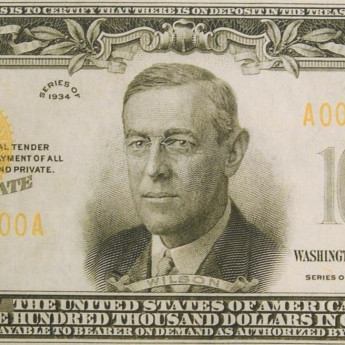Edition Numbers Unveiled: Is Lower Really Better?

By Elena Fontaine, France
In the realm of print art, the allure of owning a limited edition piece is undeniably captivating. The exclusivity, the artistic essence, and the tactile connection to the artist through a physical print, beckon art enthusiasts and collectors alike. Among the many nuances of collecting print art, the mystique surrounding edition numbers — the unique number assigned to each print in a limited edition series — often piques curiosity and sometimes, misconceptions. One common belief is that a lower edition number signifies a better or more valuable print. But does the edition number, say 1/100 versus 100/100, truly denote a difference in quality or value?
Historically, the allure of lower edition numbers stemmed from the physical printing process. In traditional lithography or etching, the first few prints were often sharper and clearer as the printing plate was fresh. As more prints were made, the plate could wear down, resulting in later prints (with higher edition numbers) potentially being of lesser quality.
Fast forward to today, the narrative has changed significantly. Advances in printing technology and stringent quality control measures ensure that each print in a limited edition series meets the high standards set by the artist and the printing studio. Each print, regardless of its edition number, is meticulously checked for quality, color accuracy, and fidelity to the artist's original vision before it is signed and numbered by the artist. In fact, the chronological order of printing does not necessarily follow the numerical order of editioning. It’s a common practice for artists to sign and number prints in a batch, and the print numbered 1/100 could very well be the last one printed.
Moreover, contemporary artists and print studios often destroy the printing plates or digital files after the edition is completed to maintain the integrity and scarcity of the limited edition. This ensures that each print, whether it’s numbered 1/100 or 100/100, retains its value and exclusivity.
The mystique surrounding lower edition numbers as being more valuable has become more of a romantic notion rather than a reality in today's art world. The true value of a print lies in the authenticity of the piece, the mastery of the artist, and the emotional connection it evokes in the viewer.
As you delve into the world of print art, understanding the modern dynamics of edition numbers can enhance your appreciation and informed engagement in collecting. Each print, irrespective of its edition number, encapsulates a fragment of the artist’s creative essence, offering a unique opportunity to own a piece of art history.
Visit Composition Gallery to explore an exquisite collection of lithographs, etchings, and other print art, and discover the timeless allure of limited edition prints, where every number tells a story of artistry, quality, and authenticity.
By Elena Fontaine, France
In the realm of print art, the allure of owning a limited edition piece is undeniably captivating. The exclusivity, the artistic essence, and the tactile connection to the artist through a physical print, beckon art enthusiasts and collectors alike. Among the many nuances of collecting print art, the mystique surrounding edition numbers — the unique number assigned to each print in a limited edition series — often piques curiosity and sometimes, misconceptions. One common belief is that a lower edition number signifies a better or more valuable print. But does the edition number, say 1/100 versus 100/100, truly denote a difference in quality or value?
Historically, the allure of lower edition numbers stemmed from the physical printing process. In traditional lithography or etching, the first few prints were often sharper and clearer as the printing plate was fresh. As more prints were made, the plate could wear down, resulting in later prints (with higher edition numbers) potentially being of lesser quality.
Fast forward to today, the narrative has changed significantly. Advances in printing technology and stringent quality control measures ensure that each print in a limited edition series meets the high standards set by the artist and the printing studio. Each print, regardless of its edition number, is meticulously checked for quality, color accuracy, and fidelity to the artist's original vision before it is signed and numbered by the artist. In fact, the chronological order of printing does not necessarily follow the numerical order of editioning. It’s a common practice for artists to sign and number prints in a batch, and the print numbered 1/100 could very well be the last one printed.
Moreover, contemporary artists and print studios often destroy the printing plates or digital files after the edition is completed to maintain the integrity and scarcity of the limited edition. This ensures that each print, whether it’s numbered 1/100 or 100/100, retains its value and exclusivity.
The mystique surrounding lower edition numbers as being more valuable has become more of a romantic notion rather than a reality in today's art world. The true value of a print lies in the authenticity of the piece, the mastery of the artist, and the emotional connection it evokes in the viewer.
As you delve into the world of print art, understanding the modern dynamics of edition numbers can enhance your appreciation and informed engagement in collecting. Each print, irrespective of its edition number, encapsulates a fragment of the artist’s creative essence, offering a unique opportunity to own a piece of art history.
Visit Composition Gallery to explore an exquisite collection of lithographs, etchings, and other print art, and discover the timeless allure of limited edition prints, where every number tells a story of artistry, quality, and authenticity.















